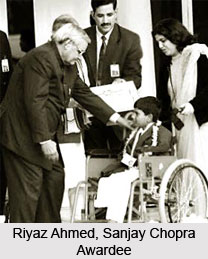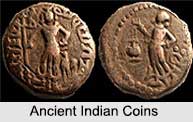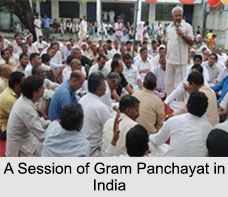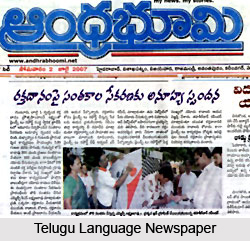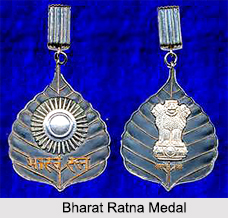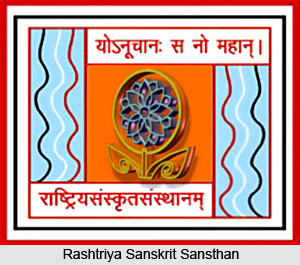 Rashtriya Sanskrit Sansthan is an autonomous body set up under the Union Government the development and promotion of Sanskrit language all over the country. The Sansthan was established in 15th October, 1970 registered under the Societies Registration Act, 1860 (Act XXI of 1860). The Sansthan is fully funded by the Government of India. It functions as an apex body for propagation and development of Sanskrit and assists the Ministry of Human Resource Development in formulating and implementing various plans and schemes for the development of Sanskrit studies. It has assumed the role of a nodal body for the effective implementation of various recommendations made by the Sanskrit Commission set up by the Government of India, Ministry of Education in 1956 to consider the propagation and development of Sanskrit language and education in all its aspects. Rashtriya Sanskrit Sansthan has now been declared as Deemed University on the recommendation of University Grants Commission by the Ministry of Human Resource Development, Department of Higher and Secondary Education.
Rashtriya Sanskrit Sansthan is an autonomous body set up under the Union Government the development and promotion of Sanskrit language all over the country. The Sansthan was established in 15th October, 1970 registered under the Societies Registration Act, 1860 (Act XXI of 1860). The Sansthan is fully funded by the Government of India. It functions as an apex body for propagation and development of Sanskrit and assists the Ministry of Human Resource Development in formulating and implementing various plans and schemes for the development of Sanskrit studies. It has assumed the role of a nodal body for the effective implementation of various recommendations made by the Sanskrit Commission set up by the Government of India, Ministry of Education in 1956 to consider the propagation and development of Sanskrit language and education in all its aspects. Rashtriya Sanskrit Sansthan has now been declared as Deemed University on the recommendation of University Grants Commission by the Ministry of Human Resource Development, Department of Higher and Secondary Education.
Formation of Rashtriya Sanskrit Sansthan
Sanskrit has played a vital role in the development of all Indian languages and in the preservation of the cultural heritage of India. No Indian language can flourish without the help of Sanskrit. Sanskrit also provides the theoretical foundation of ancient sciences. Hence, it becomes essential to preserve and propagate Sanskrit for all-round development of India. Fully conscious of this responsibility, the Govt. of India, in pursuance of the recommendations of the Sanskrit Commission (1956-57) constituted a Central Sanskrit Board, which recommended the establishment of a Rashtriya Sanskrit Sansthan. Accordingly, the Rashtriya Sanskrit Sansthan was established in October 1970 as an autonomous organisation registered under the Societies Registration Act, 1860 for the development, preservation and promotion of Sanskrit learning all over the country and abroad. The Sansthan is fully financed by the Government of India and works as a vital agency of the Central Government.
Objectives of Rashtriya Sanskrit Sansthan
As per the Memorandum of Association, the major objectives of the Rashtriya Sanskrit Sansthan are to propagate, develop and encourage Sanskrit learning and research. This also serves as the central, administrative and coordinating machinery for the management of all Campuses. The Government of India has formulated various schemes and programmes for the development of Sanskrit education and is implementing these through Rashtriya Sanskrit Sansthan and other agencies.
For fulfillment of its objectives and execution of the schemes/programmes of the Government, the Sansthan undertakes the following activities:
* Establishment of Campuses in different states;
* Conducting the teaching of Sanskrit on traditional lines at secondary,
Under-Graduate, Graduate, Post-Graduate and Doctorate level;
* Imparting Sanskrit teacher`s training at Graduate, Post-Graduate level i.e. B.Ed., M.Ed.
* Coordination of research works in various disciplines of Sanskrit learning;
* Implementation of the schemes of the Ministry of Human Resource Development for promotion of Sanskrit;
* Establishing Sanskrit libraries, manuscripts collection centers and editing as well as publishing the rare manuscripts and books of importance;
* Running Correspondence Courses for learning Sanskrit.





